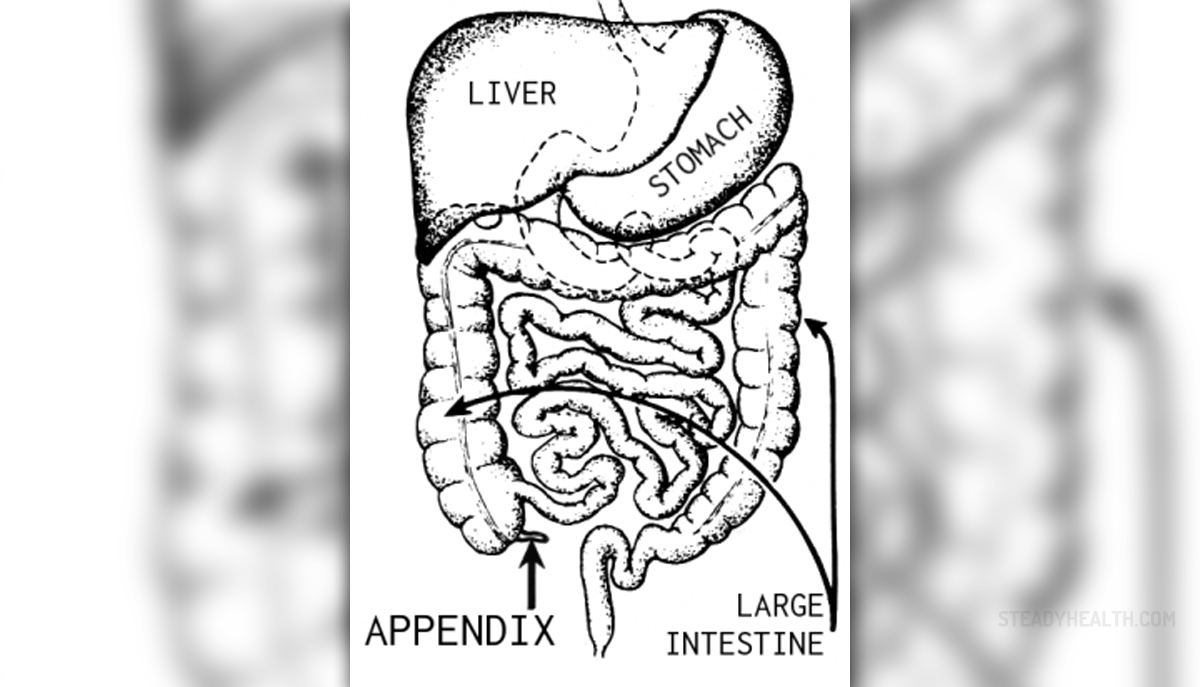What is Appendix
The appendix is a narrow and close-ended tube, about 4 inches long located in the lower right area of the abdomen. The walls of the appendix are composed of the layers typically found in the intestine, but they are somewhat thicker and contain concentrated lymphoid tissue. Children have a longer appendix than adults, and the appendix normally shrinks throughout adult life.
Until recently, scientists believed that the appendix has no function in the body. Removing the appendix from the patient’s body didn’t seem to affect a person’s health. However, recent studies discovered possible health functions of the appendix, and this article will try to shed a light on this topic.
The Appendix Function in Humans
Until recently, scientists believed that the human appendix has no known physiological function but probably represents a degenerated portion of the cecum that played a role in digestion only in our primitive ancestors. They believed that primitive men used barks of trees to feed and developed an extra organ, the appendix, to digest sufficient fiber.
However, this standpoint was never proven. For years, the appendix was ascribed with a very modest physiological purpose. There had been little or no evidence of its possible function or any other role of the appendix in animal research, too. This is because the appendix does not exist in domestic mammals. In the animal kingdom, the appendix is found only in higher apes, wombats, some rodents, and a few lower mammals.New findings
Scientific studies conducted at the Oklahoma State University revealed that the appendix plays a significant role in the development of the fetus. Appendix starts to develop in the 11th week of pregnancy, in the form of endocrine cells. These cells produce a number of biogenic amines and peptide hormones, essential for a range of biological control mechanisms.
Moreover, it seems that the appendix plays a significant role in the adult body, too. The primary function contributed to the appendix in adults is the immune function. As it seems, lymphoid tissue starts to build up in the appendix shortly after birth and reaches its peak in 20 or 30 years.
This way, the appendix functions as a lymphoid organ playing a significant role in the production of B lymphocytes and immunoglobulin A antibodies. This lymphoid build-up decreases after the age of 30, and it nearly completely disappears in old age.
- In humans, it is highly conserved and malformations are extremely rare, suggesting a role for that structure.
- The Appendix could perform a dual role. First, it is a concentrate of lymphoid tissue resembling Peyer's patches and is the primary site for immunoglobulin A production which is crucial to regulate the density and quality of the intestinal flora. Second, given its shape and position, the Appendix could be a unique niche for commensal bacteria in the body. It is extremely rich in biofilms that continuously shed bacteria into the intestinal lumen.
- The Appendix contains a microbiota as diverse as that found in the colon and could replenish the large intestine with healthy flora after a diarrhea episode. In conditions of modern medicine hygiene, and people live healthy without their appendix. However, several reports suggest that the effects of appendectomy could be subtler and associated with the development of inflammatory conditions such as inflammatory bowel disease (IBD), heart disease but also in less expected disorders such as Parkinson's disease.
- Lack of an Appendix also predicts a worsen outcome for recurrent Clostridium difficile infection, which is the first nosocomial infection in hospitals.
Another known function of the appendix is that it helps in the production and preservation of good bacteria in the stomach. The appendix serves as a reservoir for good bacteria helping in the process of establishing the optimum bacterial flora in the gut.


















Your thoughts on this
Loading...